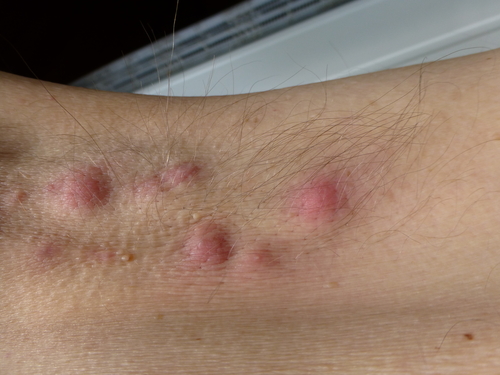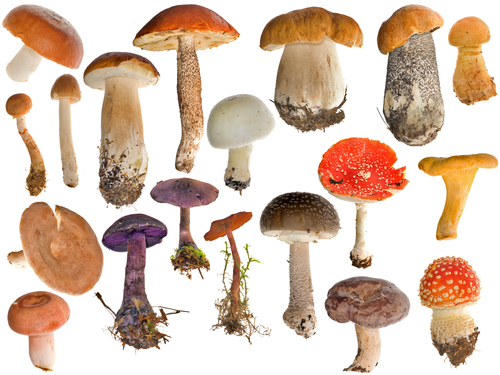Photo credit: http://www.skindermatologists.com/p/scabies-lice.html
Every now and then a patient will come into the clinic with a scabies infection. They usually have complaints of severe itching and a reddish colored rash.
Scabies is caused by a very small mite called Sarcoptes scabiei. It is spread from one person to another by close skin-to-skin contact and I’m seeing more and more patients with scabies lately so I think it’s becoming more common.
Symptoms: An itchy rash is the most common symptom, and it’s often worse at night. It causes visible lesions (red colored bumps or blisters) on the skin but sometimes these little bumps are tough to see. Certain parts of the body are most commonly affected by scabies including:
1) Between the fingers
2) Around the wrists (especially on the inside of the wrists)
3) In the crease of the elbows
4) Behind the knees
5) In the armpits
6) Around the nipples
7) Around the penis
8) Around the waistband
9) Near the low back and upper thighs
10) Along the sides and bottoms of the feet
The back and head are usually not affected.
Crusted scabies: Some people with weakened immune system can develop “crusted scabies” or “Norwegian scabies” which are described as large, crusty red patches or bumps on the skin that spread easily. The scalp, hands, and feet are affected most often. These lesions are usually not itchy but can contain many mites.
Scabies mite:  It is caused by a tiny mite that has 8 legs and is whitish-brown in color. Without a magnifying glass, you might not be able to see them at all. The symptoms are caused by the female mites, which tunnel into the skin after being fertilized by the males. The female mite lays eggs under the skin and continues to tunnel until she dies, usually 1-2 months later. After the mites hatch, the young mites travel back to the skin surface, mate and repeat the cycle of tunneling and laying more eggs.
It is caused by a tiny mite that has 8 legs and is whitish-brown in color. Without a magnifying glass, you might not be able to see them at all. The symptoms are caused by the female mites, which tunnel into the skin after being fertilized by the males. The female mite lays eggs under the skin and continues to tunnel until she dies, usually 1-2 months later. After the mites hatch, the young mites travel back to the skin surface, mate and repeat the cycle of tunneling and laying more eggs.
Transmission: Close skin-to skin-contact is the usual way that scabies is spread, but it can also be spread through the clothes of an infected patient. If someone who is uninfected wears a shirt or jacket of someone who is infected, the little mites can infect another patient. It takes about 3-4 weeks for signs or symptoms of a first scabies infection to develop after becoming infected with the mites. It’s also commonly transmitted between young adults during sexual contacts. Once the mites are no longer in contact with the skin, then can only live for 24-36 hours but they can survive longer in colder conditions. They are seen more commonly in the winter than in the summer months.
Treatment: Treatment of scabies can be challenging – see recommendations below. Most of the time we treat scabies with a topical skin cream called permethrin (also called Elimite). For patients with the more difficult to treat – crusted scabies, we use both a topical and oral anti-parasitic pill called ivermectin. The permethrin cream (5%) is preferred for young infants and pregnant mothers.
1) It is very important to apply the cream carefully to cover all the skin from the neck down to the feet.
2) Treat all family members if they are in close contact with the infected person even if the family members don’t have symptoms. The reason is to avoid repeating the cycle of infection.
3) Wash or isolate any clothing, bedding, towels, pajamas, underwear or stuffed animals that the patient has touched within the last three days before the treatment started. You can place the items in a plastic bag for three days to isolate them and the mites will die. You can also wash the clothing in hot water.
Itching can be treated with antihistamines such as Claritin or Zyrtec. Benadryl is helpful, but is sedating so we generally only recommend that at night. Itching may persist for several weeks even after the mites are eliminated. A steroid cream or a course of oral steroids may be recommended if itching is severe.
This document is for informational purposes only, and should not be considered medical advice for any individual patient. If you have questions please contact your medical provider.
I hope that you have found this information useful. Wishing you the best of health,
Scott Rennie, DO













